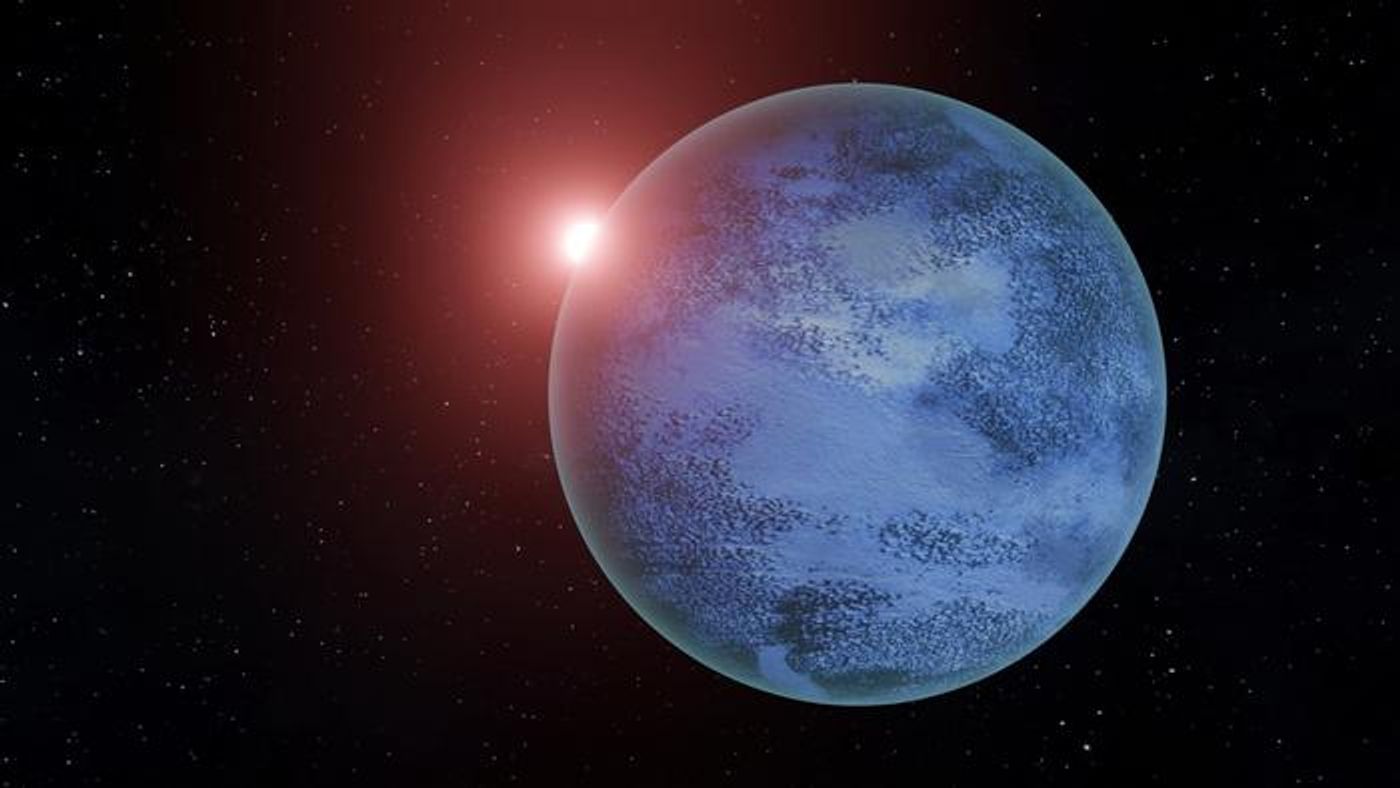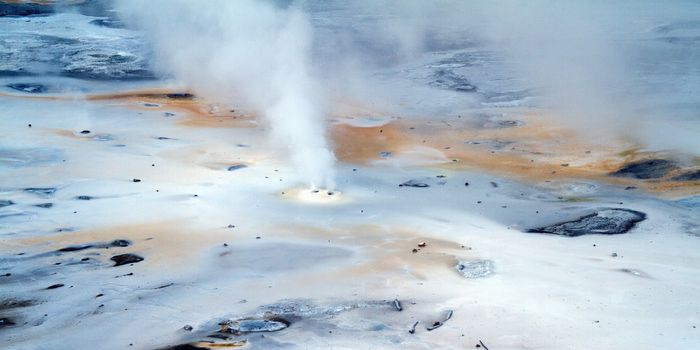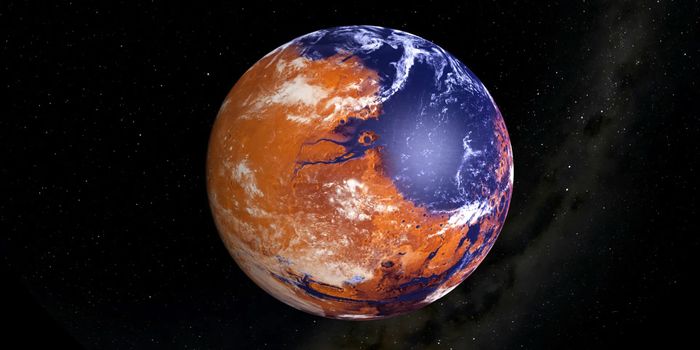Greater Likelihood for Liquid Water and Potential for Life on Exoplanets, New Study Finds
A recent study published in Nature Communications and presented at the Goldschmidt Conference examines the likelihood of a greater number of exoplanets that have liquid water, and potentially life. What makes this study so intriguing is this doesn’t just involve liquid water on the surface, but beneath the surface, as well. The study claims that such planets are not required to be in what’s known as the circumstellar habitable zone (CHZ), but that other geological conditions might be present for subsurface liquid water to exist, as well.
Artist’s rendition of a frozen world with a subsurface ocean of liquid water. (Credit: Lujendra Ojha)
“We know that the presence of liquid water is essential for life,” said Dr. Lujendra Ojha, who is an assistant professor in the Department of Earth and Planetary Sciences at Rutgers University, and lead author of the study. “Our work shows that this water can be found in places we had not much considered. This significantly increases the chances of finding environments where life could, in theory, develop”.
For the study, the researchers modeled melting mechanisms for planetary ice sheets that could result in the existence of subsurface bodies of liquid water on exoplanets orbiting M-dwarf stars. The reason why M-dwarfs were chosen is because they comprise approximately 75 percent of the star population in the Milky Way Galaxy, with more than 40 percent of them estimated to possess Earth-sized exoplanets orbiting within the CHZ.
These models demonstrated that subsurface bodies of liquid water could be produced with heat flows equivalent to our Moon’s own heat flow. In terms of timescales, the models also demonstrated these subsurface oceans could exist for up to 3 billion years, which is within the same timescale that life required to take hold on Earth.
“We modelled the feasibility of generating and sustaining liquid water on exoplanets orbiting M-dwarfs by only considering the heat generated by the planet,” explains Dr. Ojha. “We found that when one considers the possibility of liquid water generated by radioactivity, it is likely that a high percentage of these exoplanets can have sufficient heat to sustain liquid water – many more than we had thought.”
Examples of exoplanets used in this study and have been previously suggested to possess some form of liquid water, either above or beneath the surface, include Proxima Centauri b, multiple planets in the TRAPPIST-1 system, Kepler-442 b, and GJ 667 C e.
What new discoveries will scientists make about the potential for liquid water exoplanets in the coming years and decades? Only time will tell, and this is why we science!
Sources: Nature Communications, University of Nebraska-Lincoln, EurekAlert!, Wikipedia, NASA, NASA (1), NASA (2), NASA (3)
As always, keep doing science & keep looking up!









